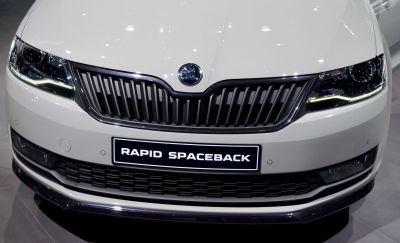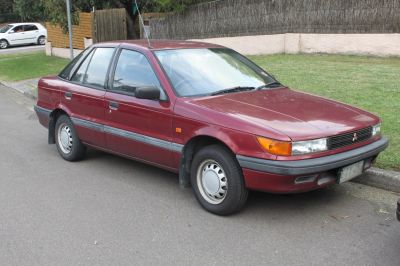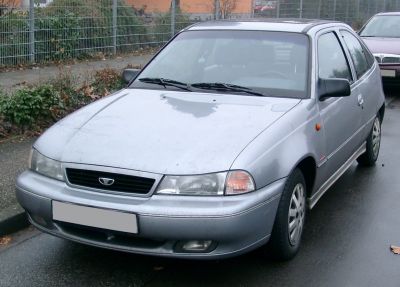 1982 Opel Ascona C CC Dimensions, Size & Specs
1982 Opel Ascona C CC Dimensions, Size & SpecsMeasurements of the 1982 Opel Ascona C CC, engineered for optimal performance and comfort
| Dimensions | |
|---|---|
| Length: | 4264 mm167.9 in14.0 ft |
| Width: | 1668 mm65.7 in5.5 ft |
| Height: | 1385 mm54.5 in4.5 ft |
| Ground Clearance: | 145 mm5.7 in0.5 ft |
| Trunk Capacity: | 445 liter15.7 cu ft |
| Trunk Capacity (Max): | 1215 liter42.9 cu ft |
| Weight Specifications | |
| Curb Weight: | 965-1095 kg2127-2414 lbs |
| Maximal permitted Weight: | 1470-1580 kg3241-3483 lbs |
| Tire Specifications | |
| Rims Size: |
|
| Tire Size: |
|
The Opel Ascona C, produced from 1981 to 1988, represents the third generation of Opel's popular Ascona model and was offered primarily as a hatchback in the 1982 model year. This compact European hatchback sports a length of 4264 mm (167.8 inches), a width of 1668 mm (65.6 inches), and a height of 1385 mm (54.5 inches), providing a balanced footprint suitable for urban and suburban driving environments. With a curb weight ranging between 965 and 1095 kg (2128 to 2413 lbs), it offers a lightweight construction that supports efficiency and agility, while its maximum weight lies between 1470 and 1580 kg (3241 to 3483 lbs), indicating its robust capacity for passengers and cargo. The hatchback's ride height or ground clearance is measured at 145 mm (5.7 inches), which gives it sufficient clearance for everyday road conditions without compromising stability. The Opel Ascona C rides on 14-inch rims paired with tires sized 195/60 R14, balancing ride comfort and handling performance. Cargo capacity is one of the car's noteworthy features, offering 445 liters (15.7 cubic feet) of luggage space with all seats in place, which expands significantly to 1215 liters (42.9 cubic feet) when the rear seats are folded flat, catering to varying storage needs. As a compact car from the 1980s, the Opel Ascona C hatchback maintained a practical and versatile profile, serving as a competitive option in the European market while delivering precise dimensions and a favorable weight profile for its class.
Discover the standout features that make the 1982 Opel Ascona C CC a leader in its class
Have a question? Please check our knowledgebase first.
The Opel Ascona C Hatchback, produced from 1981 to 1988, features a length of 4264 mm (167.8 inches), a width of 1668 mm (65.6 inches), and a height of 1385 mm (54.5 inches). These compact dimensions make it a practical vehicle for urban driving and parking, while still offering sufficient interior space for passengers and cargo. Its width and height are typical for hatchbacks in its class during the early 1980s, balancing aerodynamics and interior comfort.
The Opel Ascona C’s curb weight ranges from approximately 965 kg to 1095 kg (2128 to 2413 lbs), depending on the specific trim and equipment. The maximum allowable gross weight varies between 1470 kg and 1580 kg (3241 to 3483 lbs). This difference accounts for the variation in load capacity, which includes passengers, cargo, and additional equipment. Its relatively lightweight contributes to efficient fuel consumption and agile handling characteristics.
The luggage capacity of the Opel Ascona C is quite generous for a compact hatchback. With the rear seats in their upright position, it offers 445 liters (15.7 cubic feet) of cargo space. When the rear seats are folded down, the capacity significantly expands to 1215 liters (42.9 cubic feet). This flexibility makes the Ascona C practical for transporting larger loads, vacation luggage, or bulky items, enhancing its utility for everyday and leisure activities.
The Opel Ascona C has a ground clearance of 145 mm (5.7 inches), which is typical for a compact hatchback of its era. This moderate ride height helps provide a balance between stability and comfort, allowing the car to handle urban roads and mild uneven surfaces without difficulty. While the clearance is not designed for off-road use, it is sufficient to clear typical road obstacles like speed bumps and potholes comfortably.
The Opel Ascona C was fitted standard with 14-inch rims paired with tire sizes of 195/60 R14. This tire size provides a good balance between ride comfort, handling, and road grip. The 195 mm width tire offers adequate contact with the road surface, helping with stability and traction, especially during wet or slippery conditions, while the 60-profile sidewall aids in absorbing road irregularities.
Yes, the Opel Ascona C fits comfortably into a standard single-car garage. The car’s length of 4264 mm (approximately 4.26 meters or 13.99 feet), width of 1668 mm (1.67 meters or 5.47 feet), and height of 1385 mm (1.39 meters or 4.55 feet) mean it can easily be accommodated in typical garage spaces that generally measure around 6 meters (20 feet) long by 3 meters (10 feet) wide. Its compact hatchback dimensions also allow for some easier maneuvering within the garage area.
The Opel Ascona C (1981–1988) is slightly larger and more modern compared to its predecessor, the Ascona B (1975–1981). The Ascona C features improved aerodynamics and a more contemporary design, offering enhanced interior space with its hatchback body style compared to some sedan forms of the Ascona B. In dimensions, the Ascona C measures 4264 mm in length versus shorter dimensions in some Ascona B variants, with increased luggage capacity and slightly improved ground clearance. These changes reflect a shift toward practicality and comfort, addressing customer feedback and market trends during the transition period.
Compared to other hatchbacks from the early to mid-1980s, the Opel Ascona C stands out with a respectable length of 4264 mm (13.99 feet) and a cargo capacity of 445 liters (15.7 cubic feet) with seats up, expanding to 1215 liters (42.9 cubic feet) with the rear seats folded. This cargo space is competitive, often exceeding rivals like the VW Golf Mk2 or Ford Escort hatchbacks which offer slightly smaller luggage volumes. Its moderate width and height also place it within the typical range for compact hatchbacks, balancing maneuverability with interior space.
The Opel Ascona C, produced from 1981 to 1988, was known for its practicality, solid build quality, and driving comfort. It came in a hatchback body style which was somewhat modern for its time, providing easier access to the cargo area and more versatile storage configurations. Engine options varied across markets, usually including efficient four-cylinder petrol and diesel units. The car was appreciated for its balanced handling, reasonable fuel economy, and moderate maintenance costs, making it a popular choice for daily commuting and family use during the 1980s.
Drivers of the Opel Ascona C can expect a nimble and composed ride, aided by its compact dimensions and curb weight between 965 and 1095 kg (2128 to 2413 lbs). The relatively light weight improves fuel efficiency and responsiveness, while the suspension was tuned to provide a good balance between comfort and handling precision. The car’s 14-inch wheels fitted with 195/60 R14 tires offer tactile road feedback and stable cornering capabilities. Overall, the Ascona C delivers an engaging driving experience typical of early 1980s European hatchbacks, with manageable size for urban and suburban environments.
Discover similar sized cars.

| Production: | 2017-2019 |
|---|---|
| Model Year: | 2017 |
| Length: | 4304-4312 mm169.4-169.8 in |
| Width: | 1706 mm67.2 in |
| Height: | 1459-1475 mm57.4-58.1 in |

| Production: | 2013-2017 |
|---|---|
| Model Year: | 2013 |
| Length: | 4304 mm169.4 in |
| Width: | 1706 mm67.2 in |
| Height: | 1459 mm57.4 in |

| Production: | 1988-1994 |
|---|---|
| Model Year: | 1988 |
| Length: | 4235 mm166.7 in |
| Width: | 1670 mm65.7 in |
| Height: | 1405 mm55.3 in |

| Production: | 1995-1997 |
|---|---|
| Model Year: | 1994 |
| Length: | 4256 mm167.6 in |
| Width: | 1662 mm65.4 in |
| Height: | 1394 mm54.9 in |
